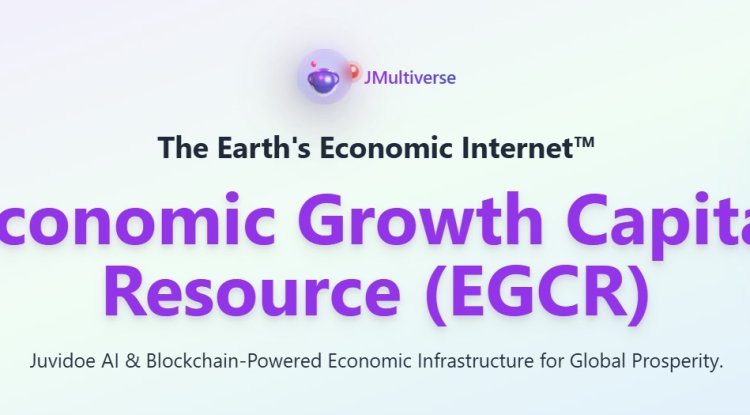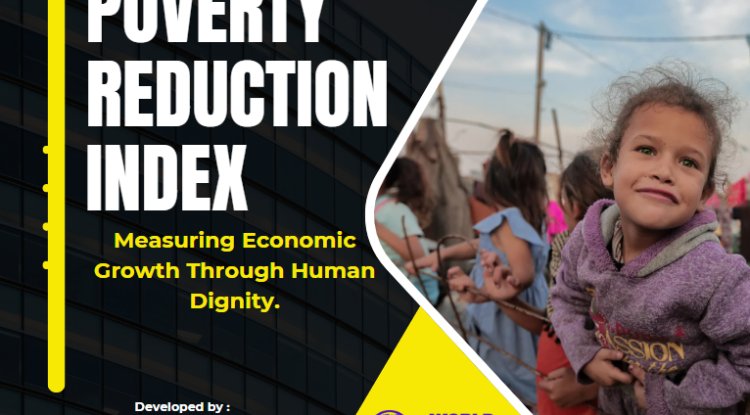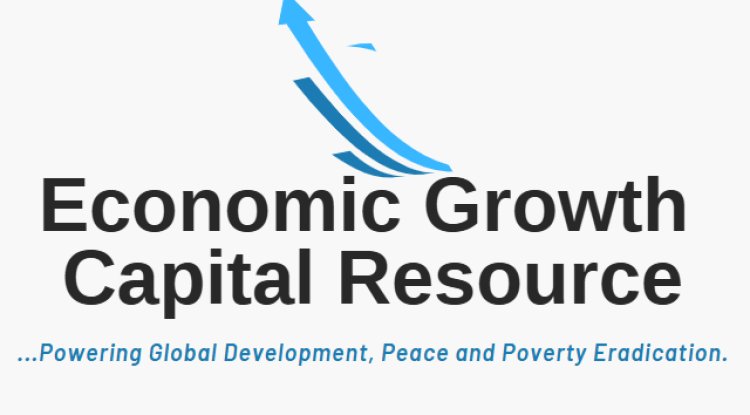Ending Poverty
A COLLECTIVE RESPONSIBILITY WITH A GRASSROOT APPROACH
Poverty does not simply denote a lack of financial resources but rather encompasses a fundamental absence of the means necessary for sustaining life and preserving human dignity. This includes access to essential resources such as safe shelter, proper nutrition, adequate healthcare, and clean drinking water. The effects of poverty manifest in various forms, from exposure to the elements due to lack of shelter to the deprivation of medical care needed to maintain health and preservation of life.
The WSandN recognizes poverty as a multidimensional issue that transcends economic boundaries and delves into the core of human existence. The complexity of poverty is influenced by historical, cultural, and geographical factors, making it a challenge that requires tailored solutions rather than a universal approach. Poverty not only impacts individuals' financial well-being but also reverberates throughout society, perpetuating injustices and undermining the principles of justice and human rights. Living in poverty means facing exclusion, struggling to meet basic needs, and being trapped in a cycle of survival without room for growth or empowerment. Poverty has a profound impact on communities, shaping their future and affecting generations to come. The cycle of poverty often leads to various societal issues such as crime, unemployment, lack of proper education, and declining health. This cycle creates a challenging environment where the lack of resources hinders progress and weakens social bonds.
Throughout history, extreme wealth disparities have plagued societies, with a few enjoying opulence while the majority struggle in poverty. Feudal systems in the Middle Ages exacerbated this gap, leaving the masses with limited resources and subject to the control of the ruling class. The Industrial Revolution brought about significant changes, but it also exposed new forms of poverty, including labor exploitation and unsafe working conditions. In response to these challenges, nations implemented social welfare systems to combat poverty. These safety nets aimed to provide education, employment opportunities, and assistance programs to alleviate the grip of poverty. While progress has been made in reducing poverty rates, issues such as several biases, unequal access to education, and limited job opportunities continue to persist. Addressing these structural injustices is crucial for achieving equitable progress and combating poverty effectively.
OUR GRASSROOT APPROACH
Addressing global poverty from the grassroots is crucial in order to create sustainable and long-lasting change in impoverished communities around the world. By focusing on the root causes of poverty at the local level, we implement effective solutions that empower individuals and families to lift themselves out of poverty. The WSandN approach involves working closely with community members to understand their unique challenges and develop tailored interventions that address their specific needs.
Furthermore, grassroots initiatives have the potential to foster a sense of ownership and agency among those living in poverty, as they are directly involved in the decision-making processes that impact their lives. This bottom-up approach not only ensures that resources are allocated efficiently, but also promotes inclusivity and participation within the community. By prioritizing grassroots efforts, we create a more prosperous future for all individuals, while improving their socio-economic status.
Poverty's grip remains a stark reality in the developing world, highlighting the economic disparities that exist between affluent and struggling nations. This divide exacerbates the challenges faced by millions, leaving them vulnerable to unrelenting scarcity. Regions like Sub-Saharan Africa grapple with limited access to healthcare, inadequate job prospects, and the cyclical nature of poverty, which hinders progress towards development. However, there is hope in the form of focused efforts that have successfully lifted millions out of poverty. China's transformation serves as a testament to the potential for progress when comprehensive strategies are implemented. By empowering citizens through education, healthcare, and economic opportunities, significant strides have been made in eradicating poverty. It is important to recognize that the fight against poverty is not limited to a single nation; it requires a global endeavor. Governments, organizations, and individuals all play crucial roles in this symphony of change. Policies such as minimum wages, social safety nets, healthcare initiatives and above all human empowerment lay the foundation for a more equitable society. Through collaboration and determination, our goal is to transition from aid dependency to self-sufficiency, ultimately breaking the cycle of poverty. The WSandN plan instills hope for a world without poverty, achievable through the right policies, partnerships, and unwavering determination.
China has set a precedent for other nations to follow. The emphasis on empathy, pragmatism, and a deep understanding of local contexts underscores the importance of holistic approaches in tackling poverty and promoting sustainable development. China's experience, although inspiring, also highlights the significance of adopting a nuanced approach. The process of relocating citizens from rural to urban areas, coupled with providing opportunities, gives rise to inquiries regarding social integration and the preservation of culture. WSandN employs customized strategies founded upon empathy, pragmatism, and a profound comprehension of local dynamics. When a nation takes a proactive stance driven by the collective it will to uplift its citizens.
In a more interconnected world than ever, the fight against poverty is a shared responsibility. Global institutions, policymakers, businesses, and civil society all play a pivotal role in shaping a future where poverty is relegated to history books. The United Nations' Sustainable Development Goals set forth a roadmap for ending poverty in all its forms, acknowledging that eradicating poverty is intrinsically linked to broader social and economic progress. While we appreciate the goals which have been set from time to time. It is imperative to note that goal setting without absolute pragmatic commitment cannot get the desired result of poverty eradication. For this purpose the WSANDN led by the Founder and President General is embarking on a mission to end poverty through the introduction of grassroot programs and empowerment system known as Subnational Prosperity.
SUB-NATIONAL ENTITIES IN ECONOMIC DEVELOPMENT
A necessary condition for a nation to grow and develop is to allocate economic resources away from current consumption towards investment in physical infrastructure. This principle holds for sub-national governments as they play a crucial role in driving economic development within their regions. In order to ensure sustainable growth, sub-national governments must prioritize constant improvements in infrastructure, as it facilitates the efficient production and exchange of goods and services. By directing resources towards capital goods, these governments enhance current consumption levels and establish a robust capital stock that sustains long-term growth and development. Therefore, it is imperative for sub-national governments to acquire physical assets with a long lifespan and to prioritize adequate maintenance to prolong their service life.
Infrastructure development is essential to economic growth and plays a pivotal role in attracting investments, creating employment opportunities, and enhancing productivity within sub-national regions. Effective infrastructure, including transportation networks, energy systems, telecommunications, and public utilities, provides the foundation for a thriving business environment. Sub-national governments are uniquely positioned to address local infrastructure needs, as they possess a granular understanding of regional dynamics and specific challenges. By strategically investing in infrastructure projects, sub-national governments can foster economic competitiveness, improve connectivity, reduce logistical costs, and attract domestic and foreign investments.
Moreover, sub-national governments have the authority and responsibility to allocate resources toward infrastructure development according to their regions' specific needs and priorities. By prioritizing infrastructure investments, these governments facilitate the efficient flow of goods, services, and people, leading to increased economic activity, job creation, and enhanced quality of life for their constituents. Sub-national governments can leverage resources, expertise, and knowledge to realize their infrastructure development goals through collaboration with various stakeholders, such as private investors, international organizations, and national governments.
Investing in infrastructure not only drives economic growth in the present but also lays the foundation for sustained development in the future. Sub-national governments must recognize the long-term benefits of infrastructure assets with extended lifespans. By acquiring and maintaining durable physical assets, these governments can ensure the availability of reliable infrastructure for future generations. Providing well-maintained infrastructure enhances regions' attractiveness for businesses, encourages innovation, and supports economic diversification.
Sub-national governments, including states, provinces, cities, and municipalities, are crucial in driving economic development within their jurisdictions. While national governments often take center stage in economic policymaking, the significance of sub-national entities must be considered.
At the WSANDN, we have a collective responsibility to eradicate poverty which has led to the empowerment and promotion of Sub-National Development Institutions (SNDIs). Our work and commitment gives hope and shine light for all.
SUB-NATIONAL DEVELOPMENT INSTITUTIONS
The concept of Sub-National Development Institutions (SNDIs) represents a pivotal framework within the regional and local economic growth domain geared towards fostering sustainable development at sub-national levels. These institutions, play a crucial role in orchestrating targeted strategies, policies, and initiatives that address the unique challenges and opportunities faced by specific geographic regions or local communities.
SNDIs signify a departure from the traditional top-down approach to development, emphasizing a more decentralized and context-specific methodology. As an integral component of the broader governance structure, SNDIs are catalysts for socioeconomic progress by tailoring interventions to address regional disparities, optimize resource allocation, and empower local stakeholders. Their establishment recognizes that effective development solutions require nuanced, region-tailored strategies that resonate with a given area's distinct socio-cultural, economic, and environmental attributes.
One of the primary objectives of SNDIs is to stimulate economic growth and innovation within sub-national territories. These institutions often collaborate with local businesses, educational establishments, and community groups to identify key sectors with growth potential, encourage entrepreneurship, and drive investments. By nurturing homegrown industries and capitalizing on local expertise, SNDIs facilitate a more inclusive and self-sustaining development trajectory that mitigates overreliance on external sources.
SNDIs enhance infrastructure and public services, bolstering the overall quality of life in sub-national regions. Through strategic planning and targeted investment, these institutions address critical transportation, healthcare, education, and utilities gaps. This all-encompassing strategy creates an atmosphere for human growth and draws in potential investors and companies, creating a positive development cycle.
SNDIs play a pivotal role in promoting participatory governance and community engagement. By involving local residents and stakeholders in decision-making processes, these institutions ensure that development strategies align with the genuine needs and aspirations of the population. This bottom-up approach enhances the effectiveness of interventions and cultivates a sense of ownership and responsibility among community members, fostering social cohesion and sustainable development outcomes.
The rationale for decentralized finance institutions like SNDIs lies in their ability to engender multi-faceted benefits. These institutions empower sub-national regions by providing them with financial autonomy. This decentralization of financial decision-making allows regions to tailor their economic strategies in alignment with their unique strengths, resources, and developmental priorities.
The following are the WSandN Sub-national Financial Institutions curated to impact and drive national/ international economic growth while also hastening the eradication of poverty from the grassroots level.
SUBNATIONAL INFRASTRUCTURE FUND
The objective of the Subnational Infrastructure Fund is to provide financial support for the development and maintenance of infrastructure projects at the regional or local level. This fund aims to improve the quality of life for residents by investing in essential services such as transportation, utilities, and public facilities. By allocating resources to infrastructure initiatives, the fund helps stimulate economic growth, create jobs, and enhance overall community well-being.
SUBNATIONAL FUNDS FOR INDUSTRIES
Otherwise known as the Subnational Funds for Industrial Development serve a crucial purpose in promoting economic growth and prosperity at the regional level. These Funds are specifically designed to finace, support and nurture the growth of local industries within any particular geographic area, such as a state or province. By providing financial resources and incentives, the Funds aim to stimulate innovation, create job opportunities as as well as attract external investments. They play a vital role in fostering industrial competitiveness, enhancing productivity, and driving sustainable development. These Funds are instrumental in addressing regional disparities, promoting inclusive growth, and diversifying the economic base of a region. Overall, the purpose of Subnational Funds for Industrial Development is to catalyze economic transformation and improve the overall well-being of the local population.
SUBNATIONAL CAPITAL MARKETS
Subnational capital markets serve as a crucial platform for subnational regions, local governments, municipalities and businesses to raise funds and capital for various purposes, such as development projects, infrastructure initiatives etc. These markets provide an avenue for subnational entities to access capital from investors, allowing them to finance public works, improve services, and stimulate economic growth within their jurisdictions. By issuing bonds or securities, subnational governments can diversify their funding sources, manage debt levels, and promote transparency and accountability in their financial operations. Overall, subnational capital markets play a vital role in supporting regional development and enhancing the overall well-being of communities.
SUBNATIONAL HEALTH SECTOR DEVELOPMENT FUNDS
The objective of regional health sector development funds is to provide financial resources specifically allocated for improving healthcare services at the local level. These funds aim to address the unique health challenges faced by different regions, ensuring that resources are distributed equitably and efficiently to meet the specific needs of each community. The Funds support the enhancement of healthcare infrastructure, the training of healthcare professionals, and the implementation of targeted health programs that cater to the diverse needs of various regions.
SUBNATIONAL EDUCATION SECTOR DEVELOPMENT FUNDS
The objective of regional education sector development funds is to provide targeted financial resources to improve the quality of education at the local level. These funds aim to support initiatives that enhance educational infrastructure, skill development at all levels, teacher training, curriculum development, and overall student learning outcomes within any regions or states to empower people and bring them out of poverty. The fund addresses the unique needs and challenges faced by schools and students in different areas, ultimately working towards achieving more equitable and effective education systems across all nations.
SUBNATIONAL WEALTH FUNDS
Subnational wealth funds serve a distinct purpose in the financial landscape, aiming to enhance the economic stability and prosperity of specific regions within a country. These funds are established independently or in parnership with subnational governments to manage and invest surplus revenues generated from natural resources, strategic industries, or other sources of income. By participating and partnering with these Funds, subnational governments can strategically allocate resources to support long-term development projects, stimulate local economies, and address socio-economic disparities within their jurisdictions. The purpose of Subnational Wealth Funds is to ensure sustainable growth, diversify revenue streams, and safeguard the future well-being of the region and its residents.
SUBNATIONAL SME DEVELOPMENT FUNDS
The Subnational SME Development Funds serve a crucial purpose in fostering the growth and sustainability of small and medium-sized enterprises (SMEs) at a regional or local level. These funds are specifically designed to provide financial support, resources, and assistance to SMEs operating within a specific geographic area. By focusing on the subnational level, the SME Development Funds aim to address the unique challenges and opportunities faced by SMEs in different regions, such as limited access to capital, research and development, marketing, technology adoption, infrastructure, capacity building and market opportunities. The ultimate goal of these funds is to stimulate economic development, create job opportunities, and enhance the overall competitiveness of SMEs within a specific region, thereby contributing to the broader economic growth of any country.
CONCLUSION
In addition to economic growth, sub-national financial entities contribute to effective governance. They link directly between citizens and government, facilitating citizen participation and engagement in decision-making processes. This decentralized approach allows for more responsive governance, as local officials are often more attuned to the needs and preferences of their constituents than national policymakers. As a result, sub-national governments can implement policies that are better aligned with the aspirations of their communities.
Maintaining proper financial stewardship, promoting transparency, and upholding accountability is vital to prevent the misallocation of resources and guarantee the efficient utilization of public finances. Furthermore, fostering skills development among local officials and administrators through capacity-building programs can strengthen the capacity of sub-national governments to create and implement impactful policies.
Sub-national financial entities form the backbone of regional economic growth, efficient governance and poverty eradication. Through fiscal autonomy, tailored policies, and citizen engagement, these entities promote economic development while meeting local needs. Their role is crucial in achieving balanced and sustainable progress, making them a vital component of the broader governmental framework. These and many more are part of our works.














